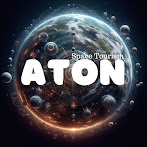The Moon has always fascinated humans as a source of wonder, mystery, and inspiration. For centuries, people have dreamed of visiting the lunar surface and exploring its secrets. In the 20th century, that dream became a reality when the United States and the Soviet Union competed in the space race to send the first humans to the Moon. The culmination of this historic achievement was the Apollo 11 mission, which landed Neil Armstrong and Buzz Aldrin on the Moon on July 20, 19691. Since then, 10 more astronauts have walked on the Moon, the last being Eugene Cernan and Harrison Schmitt on December 14, 19722.
However, for most people, the Moon remained a distant and unreachable destination, until now. Thanks to the advances in space technology and the emergence of private space companies, the Moon is becoming more accessible than ever before. Several initiatives are underway to offer tourism on or around the Moon, and some estimate this to be possible sometime between 2023 and 2043. For example, SpaceX, the company founded by Elon Musk, has announced plans to fly a private passenger around the Moon in its Starship vehicle. The passenger is Yusaku Maezawa, a Japanese billionaire and online fashion tycoon, who has invited eight artists to join him on this historic journey.
If you are one of the lucky few who will have the opportunity to experience lunar tourism in the near future, you might be wondering how to prepare for such an extraordinary adventure. Here are some tips and insights from the past and present explorers of the Moon:
- Learn about the history and science of lunar exploration. The Moon has a rich and diverse history of scientific discovery and human exploration. You can learn more about the lunar geology, geography, environment, and resources from various sources, such as NASA’s website, books, documentaries, and podcasts.
- Train your body and mind for the challenges of space travel. Traveling to the Moon is not a walk in the park. It requires physical and mental stamina, as well as adaptation to a different environment. You will have to endure long hours of flight in a confined space, exposure to radiation and microgravity, changes in your circadian rhythm and metabolism, and possible motion sickness and fatigue. You will also have to cope with isolation, stress, and anxiety that may arise from being away from Earth and your loved ones. To prepare for these challenges, you should follow a rigorous training program that includes aerobic exercise, strength training, flexibility training, nutrition counseling, medical check-ups, psychological evaluation, and simulation exercises. You should also familiarize yourself with the spacecraft systems, procedures, and emergency scenarios that you may encounter during your trip.
- Enjoy the unique and unforgettable sights and sensations of the Moon. Once you reach the Moon, you will be rewarded with a spectacular view of Earth rising and setting against the lunar horizon, as well as a glimpse of the far side of the Moon that is never visible from Earth. You will also experience a different sense of gravity, time, and scale on the Moon. The gravity on the Moon is only one-sixth of that on Earth, which means you will weigh less and be able to jump higher and farther. The time on the Moon is also different from that on Earth. A lunar day lasts about 29.5 Earth days, which means you will see either daylight or darkness for about two weeks at a time. The scale on the Moon is also different from that on Earth. The Moon is much smaller than Earth, with a diameter of about 3,474 kilometers (2,159 miles), which means you can see more of its surface at once. However, because there is no atmosphere or vegetation on the Moon, distances can be deceiving. Objects that appear close may actually be far away.
The first moon tourism journey will be a historic milestone for humanity and a personal dream come true for you. By following these tips and insights from past and present explorers of the Moon, you can make sure that you are ready for this once-in-a-lifetime experience. Remember to pack your camera, your curiosity, and your sense of wonder!
References:
- NASA. (2019, July 12). Apollo 11 Mission Overview. https://www.nasa.gov/mission_pages/apollo/missions/apollo11.html
- NASA. (2019, December 11). Apollo 17 Mission Overview. https://www.nasa.gov/mission_pages/apollo/missions/apollo17.html
- Foust, J. (2018, September 17). Companies offer different approaches to lunar tourism. SpaceNews. https://spacenews.com/companies-offer-different-approaches-to-lunar-tourism/
- SpaceX. (2021, January 28). Starship | Earth to Earth. https://www.spacex.com/vehicles/starship/
- Maezawa, Y. (n.d.). #dearMoon project. https://dearmoon.earth/
- NASA. (n.d.). Moon: In Depth. https://solarsystem.nasa.gov/moons/earths-moon/in-depth/
- Chaikin, A. (2007). A man on the moon: The voyages of the Apollo astronauts. Penguin Books.
- Nova. (2019). Back to the moon [TV series episode]. In P. Yost (Executive producer), Nova. PBS. https://www.pbs.org/wgbh/nova/video/back-to-the-moon/
- Moonwalk [Podcast]. (2019). BBC World Service. https://www.bbc.co.uk/programmes/w13xttx2
- Google Arts & Culture. (n.d.). Apollo 11: First steps on the moon [Interactive map]. https://artsandculture.google.com/project/apollo11


.png)
No comments:
Post a Comment